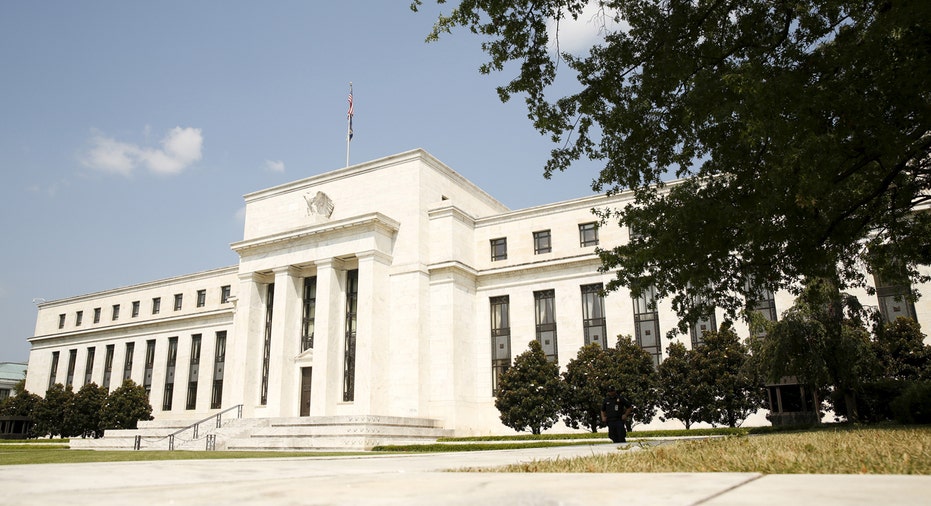Rate Hike Window May Be Closed for A While

There will never be a perfect time to raise interest rates.
Just when U.S. labor markets seem to be gaining sustained momentum Chinese economic growth weakens. Just when job creation starts picking up steam wages inexplicably flat-line. And when runaway inflation fails to emerge after nearly seven years of near-zero interest rates the threat of deflation does.
In other words, for every gain made by the U.S. economy on the long road toward recovery from the 2008 financial crisis there will be setbacks and unexpected twists and turns.
Cautious Federal Reserve policy makers have been quick to site each of those setbacks and unexpected twists and turns as they’ve repeatedly held off on the first rate hike in nearly a decade.
The question is whether conditions will ever be ideal for a rate hike that will eventually make borrowing more expensive. And the answer is that conditions may have been more ideal in June or September, which means the Fed may have missed its opportunity to start normalizing U.S. monetary policy and could now be stuck with near-zero rates for the foreseeable future.
“I think they’re definitely afraid to do it and I think they missed the window to do it,” Michael O’Rourke, chief market strategist at JonesTrading, told Bloomberg two weeks ago. “2014 was the best year of non-farm payroll growth since 1999 and obviously we’ve seen a stepdown in the economic data in 2015 and they’ve missed their window of opportunity.”
Not only did central bankers miss their opportunity earlier this year, some analysts believe the opportunity may not present itself again for many months to come.
“Given the Fed’s focus on global concerns — which won’t clear up in just a few months — the first half of 2016 looks in doubt, and they won’t raise during election season,” Hank Smith, chief investment officer at Haverford Trust, wrote in a recent note. “The Fed might have to push the hike until 2017. Because of the unwillingness to raise rates from crisis levels, the Fed has actually created more market uncertainty.”
The Fed was widely expected to raise rates at their meeting in September but voted to delay citing concerns that growth was slowing overseas, notably in China. Those concerns sparked weeks of volatility in U.S. securities markets, a factor also cited by the Fed in their decision to delay.
Deflation 'No Excuse' for Delay
Central bankers meet twice more this year, once next week and then again in mid-December. Fed officials have said both meetings are “live,” which means a rate hike is possible at either meeting.
Many analysts are skeptical of an October liftoff if for no other reason that Fed Chair Janet Yellen is not scheduled to hold a press conference at the conclusion of the two-day meeting, which would prevent her from offering a more detailed explanation for their decision.
Perhaps more important than press conferences, Fed officials will have the October meeting to dissect the disappointing September jobs report, which revealed that just 142,000 jobs were created last month and that all-important wage growth had remained essentially non-existent. In fact, wages fell slightly from August to $25.09 per hour in September, down 1 cent.
Tepid wage growth, of course, has played a key role in keeping inflation well below the Fed’s 2% target.
In the early years of near-zero rates (2008-2011), critics of the policy warned that keeping rates at that historically low level for an extended period would lead to runaway inflation. But that hasn’t been the case at all. Stagnant wage growth despite months of healthy job creation, combined with falling energy prices have kept consumer prices low. So low that deflation is now a concern.
Deflation occurs when weak demand for goods pushes prices lower, which is concerning because weak demand and falling prices hurt companies’ bottom lines. And when companies aren’t making money they tend to lay off their workers.
David Kelly, chief global strategist at J.P. Morgan Funds, said that despite warnings from some Fed officials deflation doesn’t pose an immediate concern.
“The truth is, with or without further monetary 'stimulus', there is little danger of the U.S. being engulfed in deflation. In addition, to the extent that the deflation threat manifests itself in lower commodity prices, it seems to be a positive rather than a negative for the U.S. economy,” Kelly said.
“In short, deflation fears are no good excuse for the Fed to postpone rate hikes any further. However, we may still need to wait for firmer evidence of firming inflation before the Fed’s most dovish members are tempted to act,” he added.



















